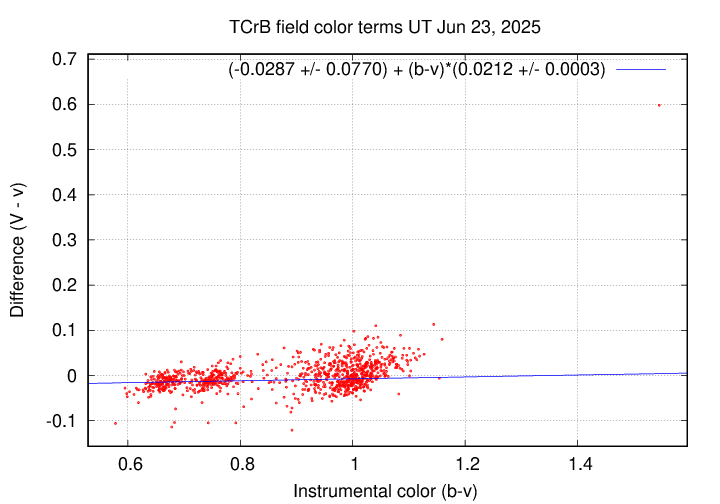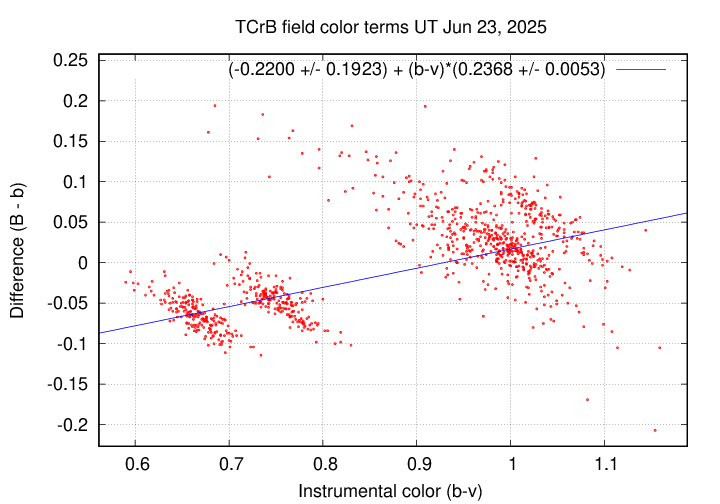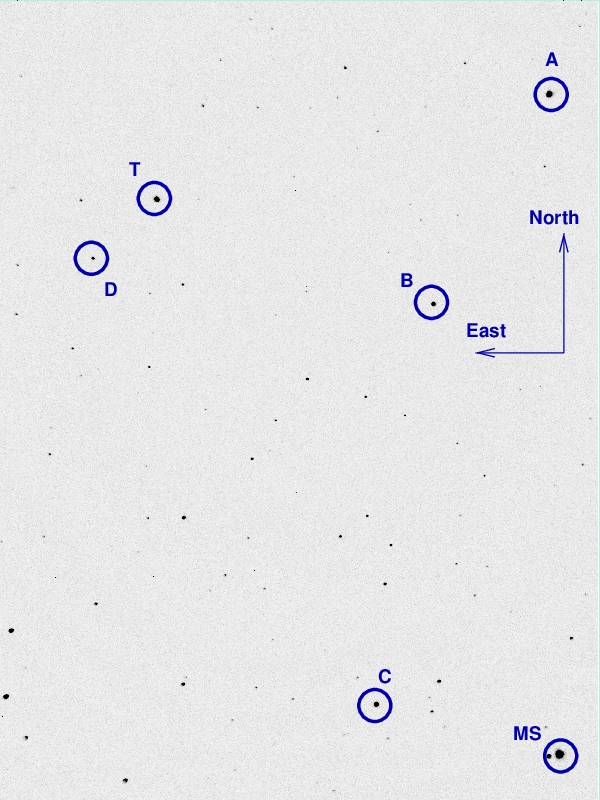
On the night of Jun 22/23, 2025, under good conditions, I acquired images of the recurrent nova T CrB. This star undergoes outbursts at long intervals of 80 years or so. Its next outburst is predicted to occur soon (but then again, it was also predicted to occur during 2024), and so I've joined the crowd who are monitoring it.
A very nice night - clear, dark, just a bit hazy. T CrB remains at its usual level.
I also used the stars in the field of T CrB to determine color terms for our B,V filters. See the final section of the webpage below.
This recurrent nova brightens from by about 8 magnitudes (!), from V = 10 to about V = 2, around every 80 years. Will we see another outburst THIS summer?
These observations involved:
Notes from the night:
The picture below shows a cropped image of the field of T CrB from Jun 14/15, 2024. The field of view is about 20 arcminutes across.

I've marked the location of several comparison stars, with magnitudes and names taken from the AAVSO's table X40237AAS. Note that the magnitudes listed for stars "A" and "B" have changed from the ones I listed in last year's notes.
star name B V
------------------------------------------------------
A 000-BJS-901 11.096 10.554
B 000-BBW-805 11.779 11.166
C 000-BPC-198 13.049 12.336
--------------------------------------------------------------------------
When the target is centered, the finder TV shows this field:
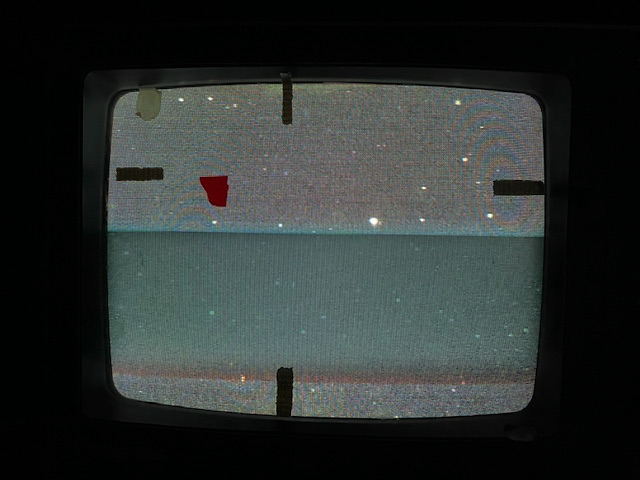
Here's the sky background over the course of the run. The smooth curve indicates a lack of clouds.
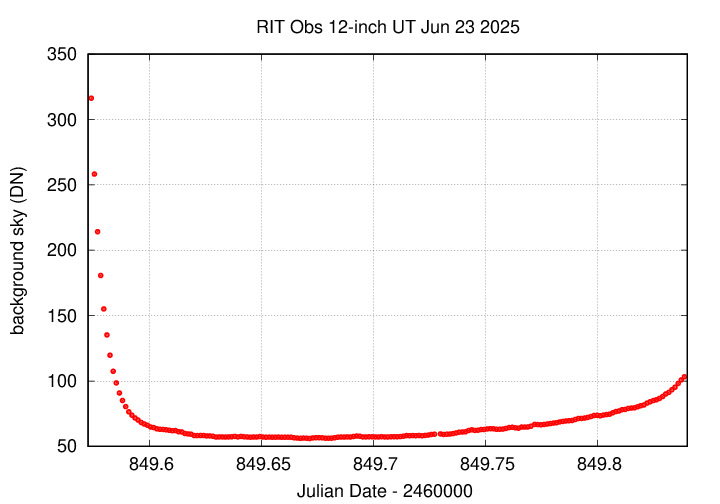
The FWHM was a bit higher at higher airmass.
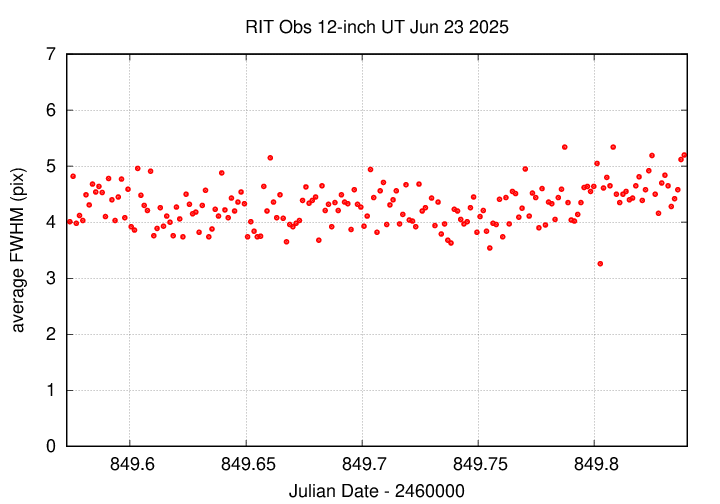
The graph below shows changes in the photometric zeropoint of an ensemble solution of the instrumental magnitudes over the course of the run. Note the change in zero-point due to extinction as the target moves lower in the west.
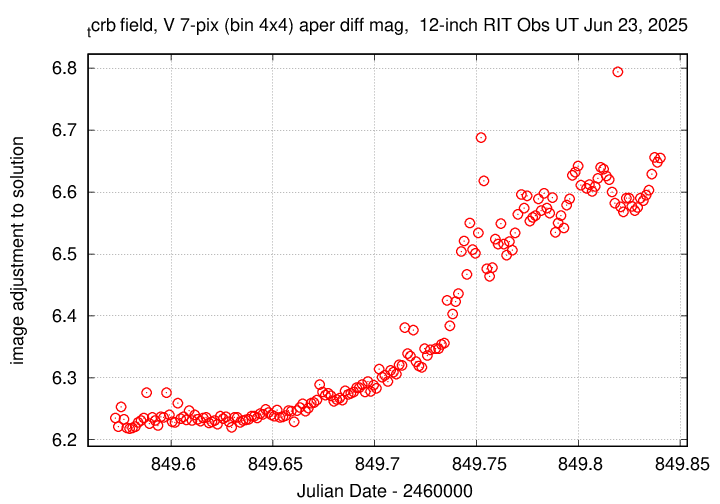
Using aperture photometry with a radius of 7 pixels in V filter (binned 4x4, each pixel is 1.036 arcsec, so a radius of 7.3 arcsec), and 7 pixels in B filter (binned 4x4, each pixel is 1.036 arcsec, so a radius of 7.3 arcsec), I measured the instrumental magnitudes of a number of reference stars and the target. Following the procedures outlined by Kent Honeycutt's article on inhomogeneous ensemble photometry, I used all stars available in each image to define a reference frame, and measured each star against this frame.
Sigma-vs-mag plots show that the floor in V-band was about 0.006 mag, which is pretty good.. In B-band, it was 0.006 mag.
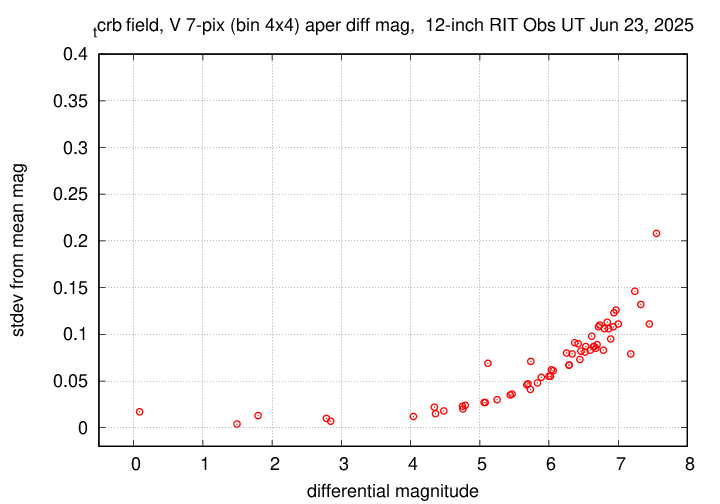
The measurements show that the target is still quiescent.
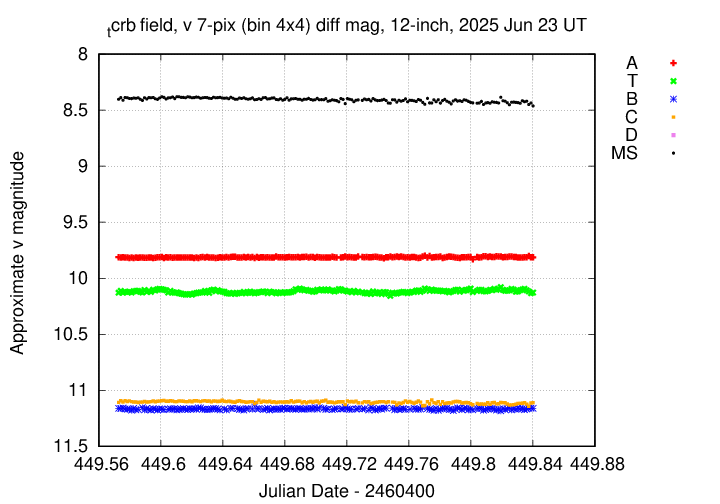
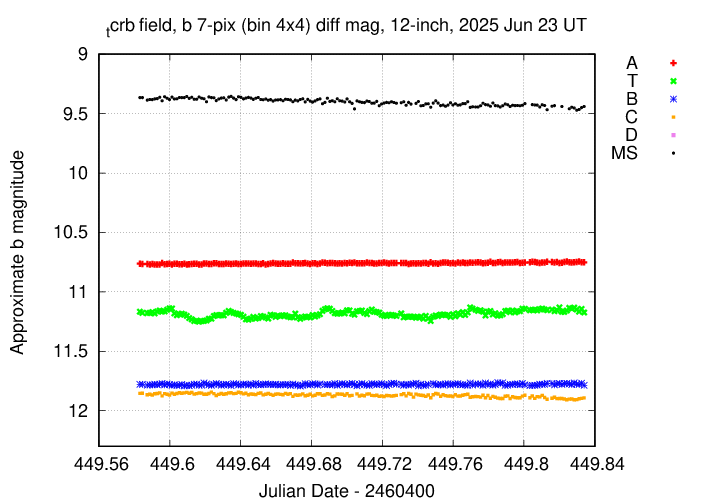
I've submitted these measurements to the AAVSO.
I've written a tool which allows me to use all the measurements of stars in a set of images to determine first-order color terms. It requires a source of accurate magnitudes on some standard scale; for these data, I used the catalog provided by the AAVSO for comparison stars in the field of T CrB:
There are only 7 or 8 comparison stars, and they cover only a narrow range of instrumental color -- 0.6 < (b-v) < 1.1 -- but it's better than nothing. I ought to budget some time to observe a really good standard field some time soon.
The results are shown in the graphs below. Note a considerable color term for the B passband (a slope of order 0.24), but only a very small effect in V-band (slope around 0.02).
N 989 (B - b) = -0.2200 +/- 0.1923 + (b-v) * 0.2368 +/- 0.0053 N 984 (V - v) = -0.0287 +/- 0.0770 + (b-v) * 0.0212 +/- 0.0003
